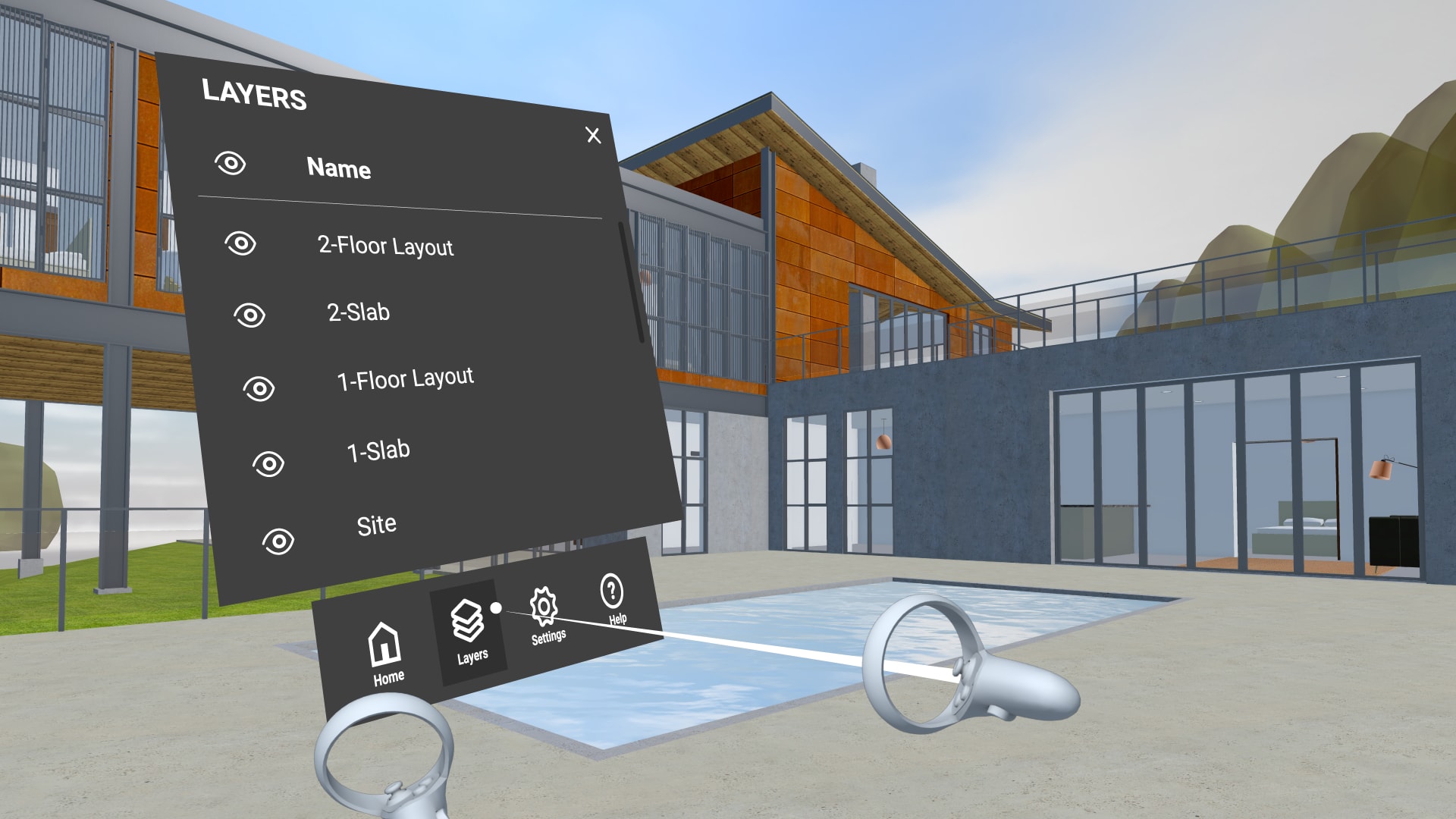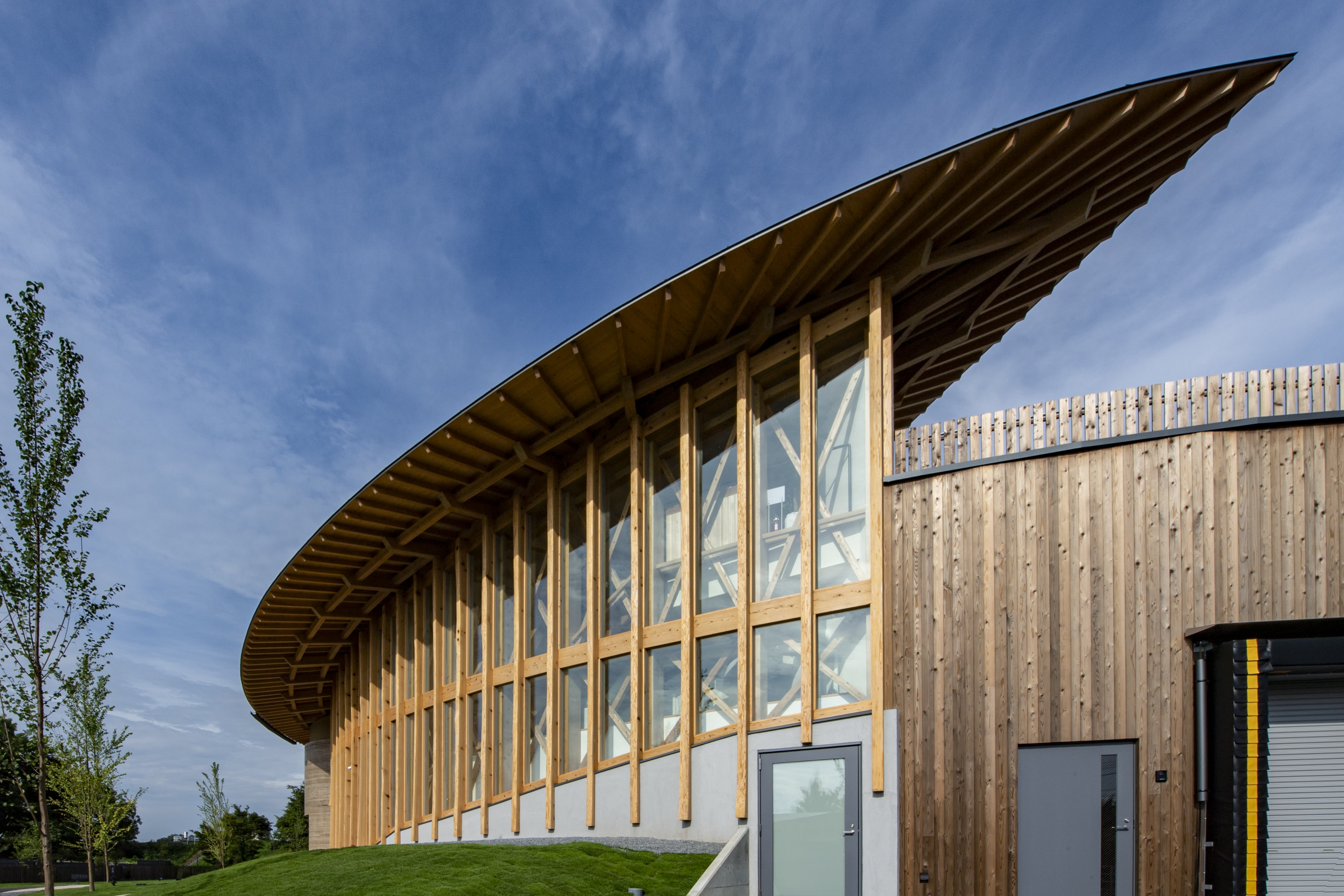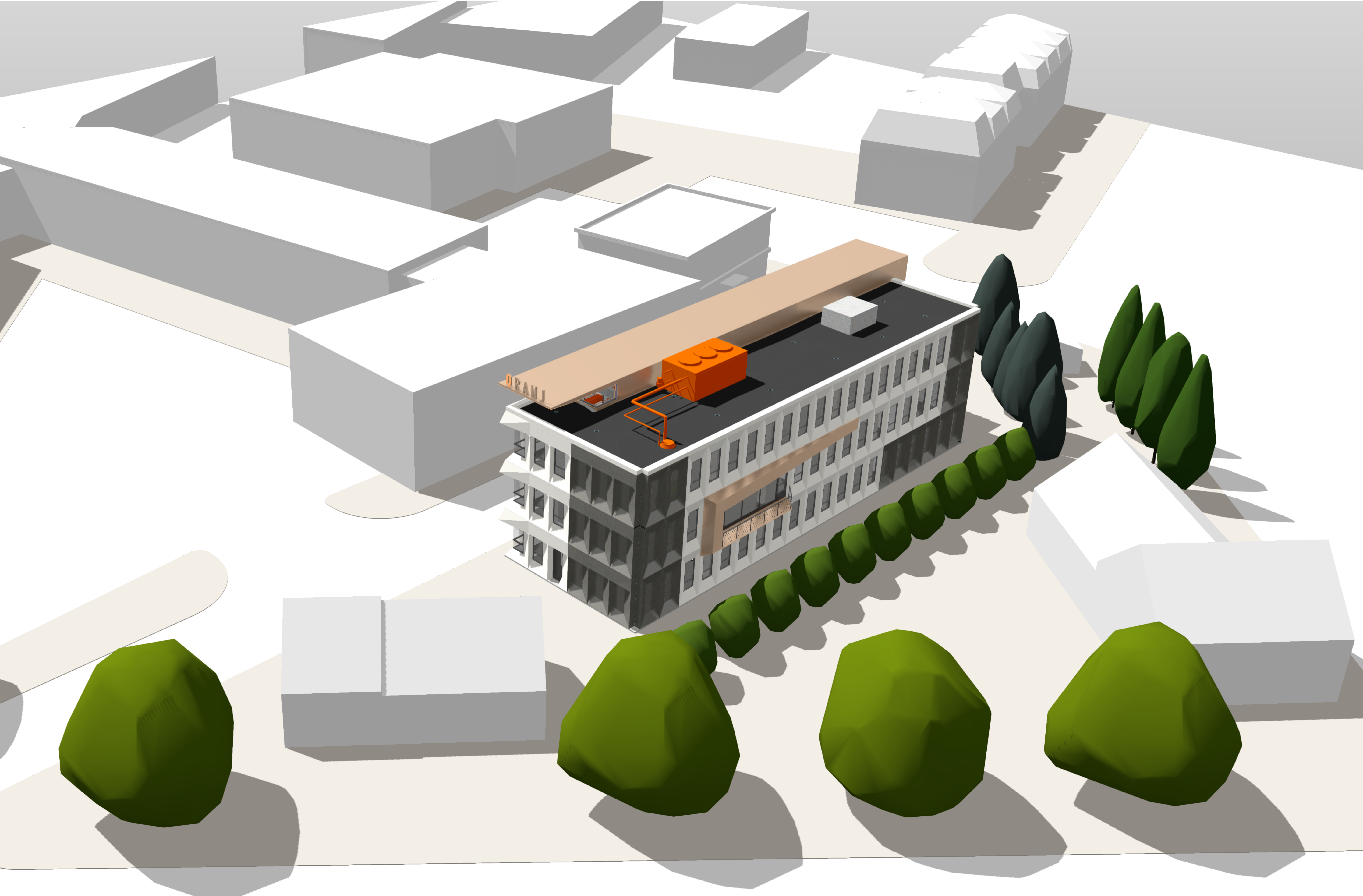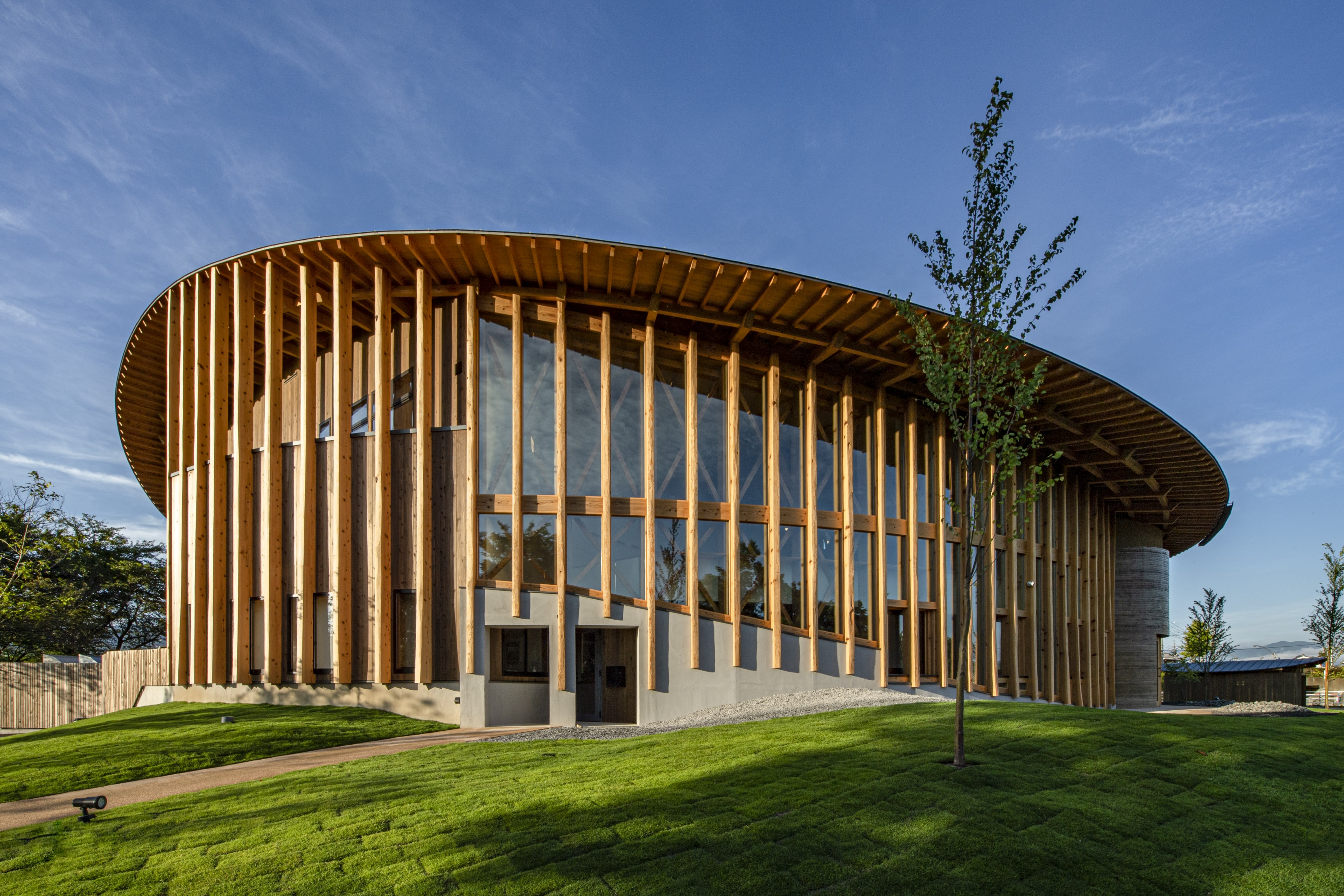In 2025, a new set of opportunities and challenges for architects is emerging, driven by technology, sustainability, and changing expectations. Here’s what you should watch for — and how these trends can shape the way you design, build, and redefine the built environment.
Meet The Trends Shaping the Future of Architecture
Architecture Trend #1: Building Information Modeling (BIM)

BIM is transforming the architecture, engineering, and construction industries and powering the future of design.
BIM allows you to create detailed 3D models with crucial data that helps to optimize accuracy, visualization, and collaboration on projects.
BIM is shifting basic documentation to a highly collaborative platform. You can now plug your ideas directly into digital models shared by the entire team. This means faster collaboration, more accurate visualizations, and proactive problem-solving before construction even starts.
In a survey of over 500 AEC professionals for Vectorworks’ 2025 AEC Trend Report, 68% have already adopted BIM into their design practices. 65% of those adopters also stated that BIM was delivering the highest return on investment to their firm.
This video details how BIM and software like Vectorworks Architect promote efficiency throughout the design process and how you can take advantage of this powerful technology:
Architecture Trend #2: Artificial Intelligence (AI)

Artificial intelligence is rapidly expanding into architectural workflows. Over the next five years, you’ll have tools that automatically analyze data, optimize layouts, and even suggest creative design alternatives. That frees you to focus more on creativity and less on repetitive tasks.
In the previously mentioned Vectorworks survey, AEC professionals reported that they expect a large adoption of AI over the next 10 years. 51% of professionals rated AI as moderately prevalent or higher in the industry today, and 86.2% expected it to be moderately prevalent or higher in the industry in the next 10 years.
Vectorworks’ AI Assistant (Preview), for instance, is designed to give you quick, context-aware answers to your questions, allowing you to stay focused on creative work.
Whether you need to learn new features or simply seek guidance, the AI Assistant (Preview) delivers fast, reliable support by drawing from official Vectorworks content and resources. With built-in feedback tools and continuous updates, the feature becomes increasingly smarter and more personalized with each interaction, evolving the more it’s used.
The AI Visualizer is another creative companion at your disposal in Vectorworks design software. You can quickly turn sketches or digital models and text prompts into vivid design visualizations. You can also use it to explore design directions, try out materials and lighting options, and communicate your ideas to clients with engaging, impactful images in a range of styles, from photorealistic to watercolor.
Architecture Trend #3: Parametric Design

Image courtesy of Alchemy Architects.
Parametric design brings flexibility and real-time feedback to your workflow.
By tweaking variables, you can instantly see how your decisions affect form, function, and sustainability. This allows you to quickly experiment with complex geometries and optimize your projects for performance, efficiency, and aesthetics.
Ultimately, parametric design tools integrated in BIM software like Vectorworks Architect make iterative design more accessible.
Architecture Trend #4: Sustainable Design Analysis

As you and the rest of the world aim to meet sustainable targets, tools like Vectorworks’ Embodied Carbon Calculator (VECC) become of the utmost importance.
Using the VECC and its functionality, you can reliably generate both early-project carbon estimations and later-phase carbon data based on accurate database values.
The demand for sustainable design analysis is encouraging, especially as we rapidly approach deadlines of climate strategies like the AIA 2030 Commitment and RIBA 2030 Climate Challenge. In fact, nearly half of all AEC professionals who took part in Vectorworks’ 2025 AEC Trend Report claim that, if they haven’t yet adopted sustainable design analysis tools, they plan to do so in the next five years.
Architecture Trend #5: Augmented and Virtual Reality (AR and VR)

AR and VR are now becoming standard for presenting ideas to clients and collaborators. You can walk people through lifelike 3D spaces, adjust finishes and lighting on the spot, and gather feedback before building begins. This tech bridges the gap between your vision and their expectations.
For example, Vectorworks Odyssey, a virtual reality viewer app created for Meta Quest 2 headsets, helps you and your clients experience immersive models with a bird’s-eye view.
To learn more about the possibilities of Vectorworks Odyssey, check out the video below:
Architecture Trend #6: Natural Building Materials

Image courtesy of Tono Mirai Architects.
There’s also a revival of interest in natural materials like timber, bamboo, and rammed earth.
When choosing these options, you’re more likely to boost sustainability, provide warmer aesthetics, address more stringent regulations, and meet the rising client awareness for green solutions. It’s all about blending beauty with a lighter environmental footprint.
A perfect example of designing with natural building materials comes in the form of Oyaki Farm by Tono Mirai Architects (pictured above).
This building is crafted from semi-fire-resistant wood, primarily using cedar and cypress. The toplights of the rammed earth wall, alongside the high side windows that invite natural ventilation, and even the gentle cascade of rainwater from the roof, all serve as conduits, juxtaposing sky and land. In doing so, they also play an integral role in reducing the building's CO2 emissions.
Architecture Trend #7: Digital Twins

Digital twins are growing in importance and popularity for architects and AEC design professionals.
A virtual model of a building or asset that mirrors its real-world counterpart, a digital twin draws on data from sensors, cameras, and other connected systems to give building owners up-to-date data of their facility. A digital twin allows for a real-time view of how a building performs, how to spot areas that need attention, and how to make smarter decisions about maintenance and operations throughout its lifecycle.
Architecture Trend #8: Adaptive Reuse

Image courtesy of Lacaton & Vassal, Gaëtan Redelsperger, Quartus Residentiel, and Le Bureau Jaune.
Old buildings can be the backbone of new designs.
With adaptive reuse, architects and interior architects are reimagining historic structures, giving them new life and reducing waste by pairing innovative design with the character of existing spaces.
Adaptive reuse is your chance to honor the past while designing for tomorrow.
Click here to learn how to leverage 3D design software for adaptive reuse.
Architecture Trend #9: Interoperability

Interoperability is also central to architecture and BIM workflows, letting you share project data and models across teams regardless of the software each person uses.
When you work in Vectorworks Architect, you benefit from open standards like IFC, which act as a universal language for project information, including geometry, materials, costs, and compliance data. With this flexibility, you can collaborate efficiently with engineers, consultants, contractors, and clients, connecting your ideas in real time without worrying about data loss or project slowdowns.
Vectorworks Architect even offers more import/export capabilities than AutoCAD or SketchUP.
Architecture Trend #10: Biophilic Design

Image courtesy of i29.
Now more than ever, your designs are being shaped by a focus on the well-being of occupants.
Biophilic design, for example, is a philosophy that brings natural elements and light into built environments, helping you blur the boundaries between indoors and outdoors. By incorporating features like greenery, natural textures, and organic materials, you create spaces that evoke the feeling of being outside.
Whether it’s using biophilic elements, natural light, or even optimizing acoustics, you can impact mental and physical health through thoughtful choices that support everyday life.
The Future of Architecture is Here
By embracing these trends, you’ll redefine what’s possible in architecture during 2025 and beyond. Stay curious, experiment boldly, and keep shaping the spaces people love to inhabit.
Featured image courtesy of Tono Mirai Architects.
Stay in the know with the latest insights
Subscribers receive news, customer stories, success and learning tips, event information, and other important announcements from Vectorworks.
By submitting this form, you agree that Vectorworks, Inc. and its authorized partners may contact you in regards to news, offers, and the use of our software, services, and platforms. Learn more about our privacy practices and your data on our privacy page.*
